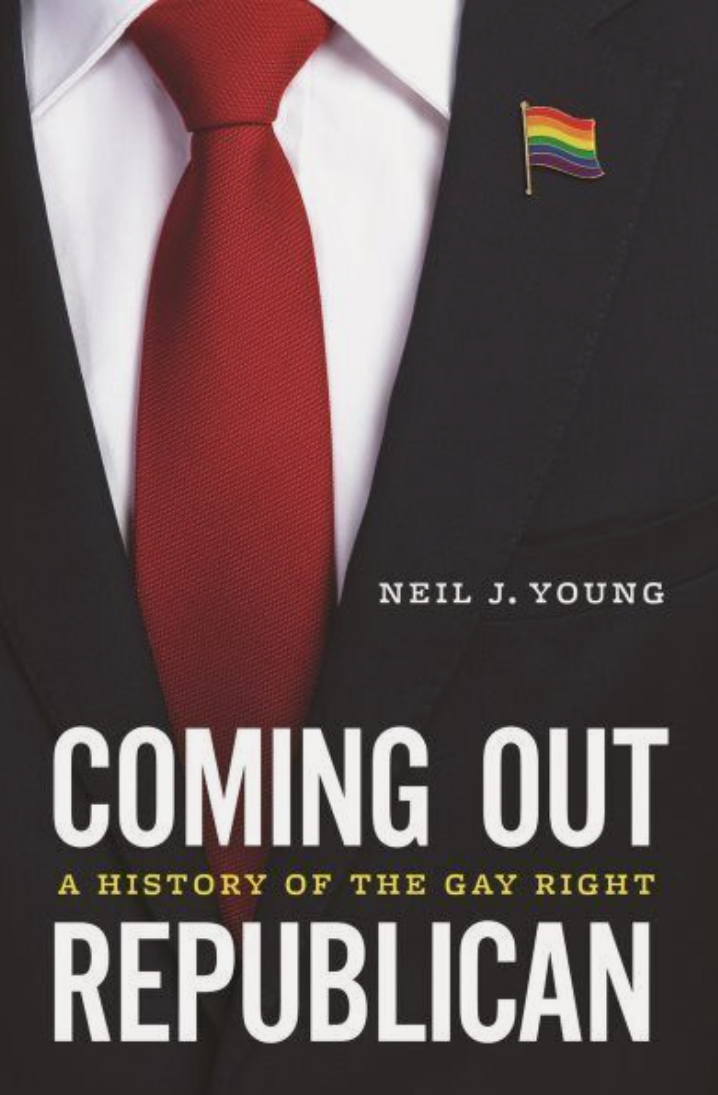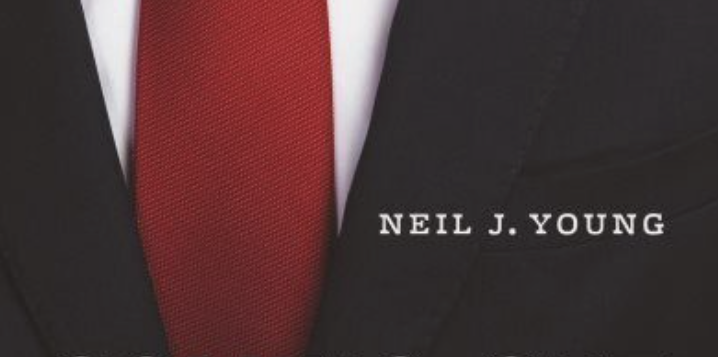 COMING OUT REPUBLICAN
COMING OUT REPUBLICAN
A History of the Gay Right
by Neil J. Young
Univ. of Chicago. 441 pages, $30.
I WAS A REPUBLICAN, but I never inhaled. I first voted in 1974, a time when many states had significant numbers of conservative Democrats, especially in the South, and also liberal Republicans, anchored in the Northeast but scattered around the country, notably in the libertarian West. This expansive political landscape, before “Republican” and “religious Right” merged, endured for a while: as recently as Clarence Thomas’ confirmation hearings in 1991, a professional Black woman referred to herself as a Rockefeller Republican, more than a dozen years after the former Vice President’s death.
This period of political overlap and increasing gay activism, roughly from the 1960s to the ’90s, is one of the transition times discussed in Neil J. Young’s smoothly written and exceptionally well-researched look at gay Republicans then and now. The book begins earlier, with the lives of people, such as Dorr Legg, who were born in the interwar years. Legg and his cohort lived through the “lavender scare” of 1950s Washington, started some of the first gay rights organizations in California, and were either killed by AIDS in their fifties and sixties or made it through to see some of our most important victories. We also see here the rise of scaremongers such as Florida’s Anita Bryant and the first whiff of theocrats rising from southern swamps.
Gay people of my generation used to meet many civilized Republicans with whom one could have a nuanced discussion of public policy. One such, a gay man my age, first met me in the dim arcade of an adult bookstore in central Missouri. He was then serving on the staff of arch-conservative Governor John Ashcroft, later U.S. Senator and Attorney General in George W. Bush’s first administration. Why was he there (in the office; we know why he was in the arcade)? Because he was a very conservative Catholic. He just happened to like men. This is an example of what Mark Moran called “weird dissonances on the part of openly gay conservatives” in his review of James Kirchick’s Secret City: The Hidden History of Gay Washington (The G&LR, July-August 2022).
This theme of closeted gay men hovering in the shadows of Republican politics and working behind the scenes is common in the book. The author also notes the double lives of such people as U.S. Representatives Bob Bauman and Jon Hinson, who seemed to think that they’d never get caught slurping congressional staffers in restrooms or lurking in gay movie houses. Some, even today, dare us to speak the name of their love, e.g. former Republican Congressman Aaron Schock, first elected at age 27, who showed his congressional pecs in Men’s Health magazine and generally acted uncatchable, eventually falling to a financial scandal. Not that anyone was even a little surprised, but Schock finally came out officially in 2020.
The number of Republican fundraisers, organizers, and rabble-rousers whose stories are told here is eye-opening, from buttoned-down lawyer and banker types to the decidedly uninhibited and probably unzipped Milo Yiannopoulos. Unexpected political relationships are revealed: even curmudgeonly Howard Jarvis, the author of California’s Proposition 13, met with gay conservatives and was glad to have them on board his anti-tax campaign.
The most salient characteristic of gay Republican activists throughout the eighty-year period on which the book focuses is that they were all but universally white men. Young notes this throughout the book and points out the occasional nearly invisible lesbian flitting across the stage, a bit out of place among the phalanx of upwardly-striving suits. Many of those on the Peter Thiel side of the party seem to care only about money and an implausible detachment from society. They’re not interested in issues much further afield than taxes and economic freedom. These crypto-libertarians are shown in Young’s book to have scorned what they called the “liberals” within the Log Cabin and GOProud complex. Some of these latter Republicans have goals that overlap with those of the Human Rights Campaign, but who can’t stomach the broader liberal social agenda of the HRC.
The author explores the huge world of gay politics in California, staying focused on what Republicans more broadly were doing. In the Bay Area, many gay Republicans, emphasizing personal freedom, were leaders in the fight against bathhouse closings. Harvey Milk is hardly mentioned in the book, as he does not greatly affect the Republican story. Milk’s successor Harry Britt, who once slept in my bed (I wasn’t in it at the time), is mentioned, though his narrow loss to Nancy Pelosi in a U.S. House primary is not. Journalist Randy Shilts also makes a few cameo appearances as local battles take place.
The gay Republican organizational splits of the 1990s and especially the 2000s appear to be rooted in different attitudes toward the need for various protections and positive support for gay people, versus simply the desire to be left alone. Gay marriage has never had universal support within the gay community, and Republicans were split on that issue as well, though commentator Andrew Sullivan (not a Republican) made a case that marriage is inherently conservative. Today, assigning words like “conservative” and “liberal” to candidates, parties, and groups has developed unexpected complexities. As the author notes, by the 2000s, even the Log Cabin Republicans, of which I was a member in the 1990s before going independent, had begun a fissiparous period based on questions not only of tactics, which had always been debated, but real disagreement on fundamental issues such as abortion.
Coming Out Republican ends with a brief vignette about Donald Trump’s lack of more than a pro forma interest in the anti-gay agenda. There is little conservative about Mr. Trump, whose blaring, elephantine ruckus conserves nothing and damages institutions as old as the nation. We are left wondering whether most of today’s Republicans are in fact conservative. In some states where they were once strong, they are now, on paper, a fairly small piece of the electorate while unaffiliated voters steadily increase. Whether the current period of political churning produces a meaningful realignment or division of parties remains to be seen, but, for now, gay Republicans have little opportunity to affect their chosen party’s direction. And many gay conservatives still don’t inhale.
Alan Contreras, a frequent contributor to these pages, is a writer and consultant living in Eugene, Oregon.






